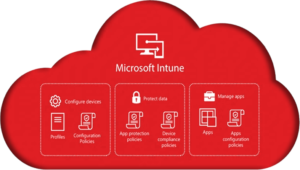This is part of an ongoing series about Windows Azure. See this blog post for an introduction to Azure.
This part in the series will focus on creating and managing virtual machines and SQL databases. Pricing for everything covered in this post can be found on the Windows Azure website.
Virtual Machines
To create a virtual machine, click the “New” button in the bottom-left corner of the Azure portal. Select “Virtual Machine” from the “Compute” tab. You can select either the quick create or from gallery options. If you choose “Quick Create”, the options are much simpler. This can be used for any Windows Server OS, or several popular Linux distributions. To create a machine, simply give it a DNS name, select an image and size, and give it an administrator username/password.
Creating a VM using the gallery provides a whole host of more options. You can create pre-configured machines hosting SQL server, Visual Studio, or Oracle databases. There are also more Linux distributions to choose from. Finally, you can choose custom images that you have uploaded to Azure. Step two is the basic options shown using the “Quick Create” option. The third screen is where the extra settings are. You can go ahead and create a new cloud service and availability set if you do not have one. Also, you select the options for remote desktop and PowerShell access, as well as a host of other protocols. After you have the options set to your specifications, create the VM.
Azure takes some time to provision the VM, but once complete you will have access via RDP by clicking the “Connect” button. You can follow the progress by expanding the “Details” bar in the bottom of the portal.
After you have connected to the VM, you can do any administrative tasks that you need, from adding roles and features to installing whatever systems you need.
SQL Database
Now we will create a SQL database. To do that, select the “SQL Databases” tab and click “Create a SQL Database”. Give the database a name and select the edition, maximum size, and server. If you have not already created a SQL server, you can create one here.
After specifying the options, Azure will create the database and server (if required).
To manage the database, select it and click “Manage”. If this is the first time you have tried to manage it, Azure will prompt to create the appropriate firewall rules. You will be presented with this screen:
From here, we can execute SQL queries and view the database as a whole. Administrators can also view databases and manage them from SQL Management Studio 2014.
Come back next week for more on Azure.
Disclaimer
All content provided on this blog is for information purposes only. Windows Management Experts, Inc makes no representation as to accuracy or completeness of any information on this site. Windows Management Experts, Inc will not be liable for any errors or omission in this information nor for the availability of this information. It is highly recommended that you consult one of our technical consultants, should you need any further assistant.





